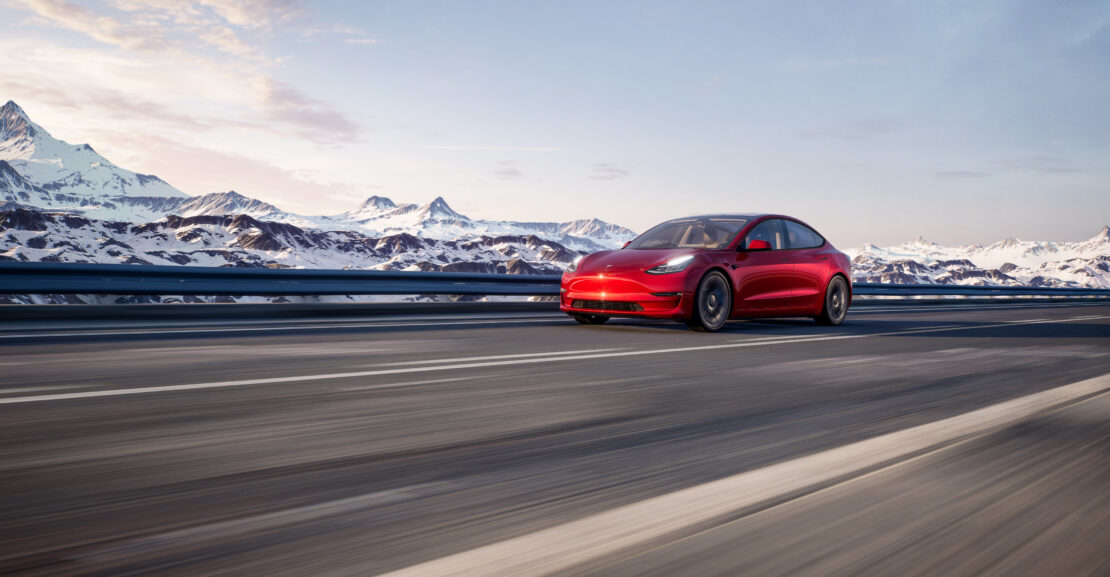[ad_1]
Tesla (TSLA 2.41%) has long been associated with artificial intelligence (AI). Without AI, there can be no self-driving cars, a considerable part of the Tesla investment thesis. Tesla has benefited from this new-found AI investing interest, as the stock has risen nearly 60% since AI became the hottest topic in the investment world at the beginning of May.
But can AI seriously push Tesla stock to a new high? Or is AI just another investment bubble waiting to burst? Let’s find out.
Tesla uses AI, but not for the same purpose as many others
Tesla’s AI endeavors are focused on its pursuit of self-driving cars. With millions of Teslas on the road, it collects an immense amount of data to train its autonomous driving system. However, its ability to process this information and improve the model has been lacking, so it designed its Dojo supercomputer.
Tesla built this supercomputer with one task in mind: using video from Tesla vehicles to train its AI model. This long-awaited improvement should help with Tesla’s AI processing capabilities and further bring its self-driving model into the mainstream.
However, the problem with Tesla’s latest rally is that most AI interest deals with large language model (LLM) chatbots, and this doesn’t necessarily translate to Tesla’s AI research.
Undoubtedly, there will be some improvements in technology related to AI, but this doesn’t have a chance to affect Tesla’s business beyond its self-driving pursuit.
And if you look at its valuation, it’s trading as if it’s already achieved widespread rollout.
The stock is pricey
In Q4 2022, Tesla revealed it had about 400,000 vehicles with its full self-driving (FSD) product installed on the road. With the basic autopilot to FSD upgrade costing $199 per month and a $15,000 base cost needed to install the product on a car, it has serious potential to become a massive revenue driver for Tesla. However, Tesla has not revealed how many of those cars have the $199-per-month add-on.
FSD is much more advanced than autopilot. Basic autopilot requires a fully attentive driver and is similar to what many new cars on the road already have: Adaptive cruise control and autosteer to keep the car within your lane. FSD allows the vehicle to operate autonomously and can stop at traffic lights and signs, as well as drive you home from a job.
If all 400,000 vehicles have it, that generates nearly $1 billion in annual revenue for Tesla. Furthermore, any additional revenue from FSD subscriptions would be essentially 100% profit (after cost of revenue is subtracted), as Tesla is already spending money on its engineering staff to create this capability.
This effect, known as reaching scale, is powerful because a product has two main types of costs: Fixed and variable. Fixed costs is the cost of goods, which in the case of a software product is very little. Variable costs include the operating expenses required to deliver the product. Tesla doesn’t need to double its engineering staff just to account for double the FSD signups. as a result, a significant portion of this revenue makes its way to the bottom line.
So as AI hype runs rampant throughout the tech world, the main boost it will give Tesla is that prospective car buyers may opt to install the expensive FSD equipment in their new vehicles. However, that doesn’t seem like a rock-solid investment thesis for the stock, so this latest rally may just be a flash in the pan.
At 75 times earnings, Tesla has come down significantly from its highs, but it’s still an incredibly expensive stock, regardless of industry.
TSLA PE Ratio data by YCharts
Additionally, Tesla’s margins have come under pressure thanks to price cuts.
TSLA Operating Margin (Quarterly) data by YCharts
Lower operating margins mean lower earnings, which will increase the price-to-earnings ratio. One way to reverse this trend is to generate higher-margin revenue, like FSD subscriptions.
Still, until we see material results that suggest AI interest will translate to FSD interest, this rally isn’t sustainable. As a result, I think investors should avoid Tesla stock after its latest run-up. However, if Tesla falls back down to earth and trades at a more reasonable valuation, the stock will be a bit more interesting. Until then (or until Tesla reports great earnings), I’m not adding more capital to my position.
[ad_2]
Source link


